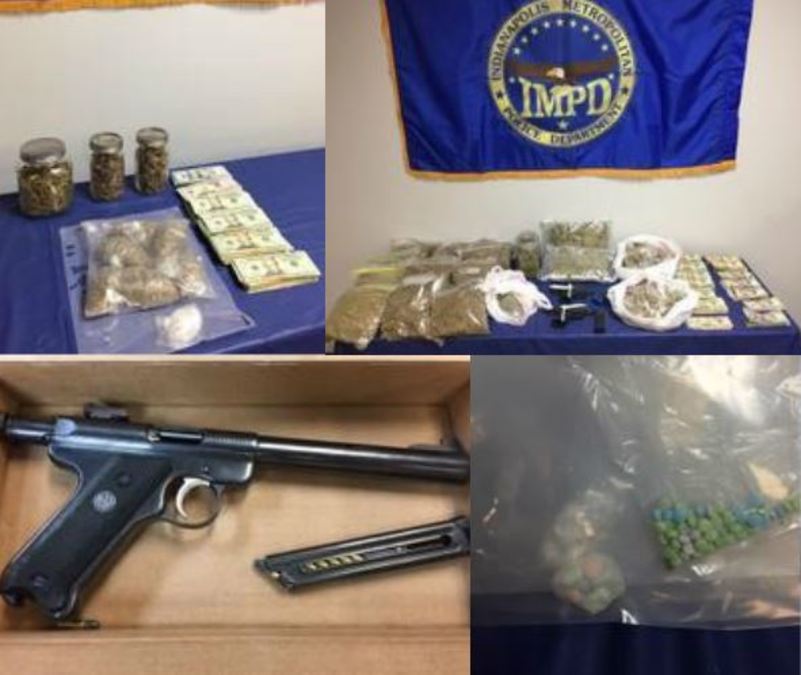
A study published in American Journal of Public Health found fatal drug overdoses increased following police seizures of illicit substances. Researchers examined data over a two year period in Marion County, Indiana, and “compared frequency and characteristics of drug (i.e., opioids and stimulants) seizures with changes in fatal overdose, emergency medical services nonfatal overdose calls for service, and naloxone administration in the geographic area and time following the seizures.”
One reason, researchers posited, could be that the strength of illicit substances are unknown. Consumers going quickly from a supply that’s been seized by police, to a new supply that may be stronger, may administer the same dose. Dependency on a substance may lower discrepancy so the consumer can quickly avoid withdrawal.
persons with opioid use disorder who lose their supply will experience both diminishing tolerance and withdrawal, whereby even the anticipation of painful symptoms may lead them to seek a new supply while discounting risks that stem from the differences in potency inherent in an illicit opioid market; this results in unknown tolerance, uncertainty about a safe dose, and increased overdose risk.
Researchers explore what’s commonly called “The Iron Law of Prohibition”. A massive increase in opioid dependency occurred in the United States from around the mid 2000s to the mid 2010s with the rise of “pill mills”, or easily obtainable prescription opioids through sometimes nefarious clinics.
Crackdowns followed, with the DEA busting everything from nefarious “pill mills” to physicians prescribing pain medication for legitimate reasons. In 2016 the CDC released opioid prescription guidelines, and to this day physicians and hospitals have swung far to the other direction, as thousands of complaints from patients have been pouring into advocacy organizations like the Doctor/Patient Forum that doctors are refusing to treat their legitimate pain issues, from chronic pain to broken bones to cancer.
Many of these patients have found kratom. Others turned to street opioids, just as they are growing stronger and stronger with fentanyl and its analogs, which led to overdose deaths at over 100,000 per year.
Efforts to disrupt the illicit drug supply have historically incentivized potency to minimize volume (and therefore transportation risk) and maximize profit, bringing the United States from an overdose epidemic fueled by prescription medications to illicitly manufactured fentanyl.
Researchers suggest that while US drug policy still favors prohibition, “public safety partnerships could entail timely notice of interdiction events to agencies that provide overdose prevention services, outreach, and referral to care.”
But evidence suggests current US drug policy is inducing rather than reducing harm.
Our study adds to a growing body of literature that suggests drug criminalization and supply-side interdiction might produce more public harm than public good. This casts doubt on the core assumption of state and federal drug policy and suggests that police officers intending to protect the public’s health and safety may be inadvertently exacerbating harms such as fatal overdose. Policymakers need to revisit the role drug policies play in perpetuating an overdose epidemic that is negatively affecting the nation’s life expectancy. This should include careful consideration of the population-level consequences from decades of interdiction efforts that have not resulted in any meaningful reduction in the price or availability of drugs in the community over any substantial period and may contribute to increased risk of overdose and its sequelae, including death.
Reference
Ray, B., Korzeniewski, S. J., Mohler, G., Carroll, J. J., Del Pozo, B., Victor, G., Huynh, P., & Hedden, B. J. (2023). Spatiotemporal Analysis Exploring the Effect of Law Enforcement Drug Market Disruptions on Overdose, Indianapolis, Indiana, 2020-2021. American journal of public health, 113(7), 750–758. https://doi.org/10.2105/AJPH.2023.307291
Related Articles
… https://ajph.aphapublications.org/doi/10.2105/AJPH.2023.307329
… https://jamanetwork.com/journals/jamanetworkopen/fullarticle/2754249
… https://www.sciencedirect.com/science/article/abs/pii/S0955395922003188?via%3Dihub
…https://www.sciencedirect.com/science/article/pii/S0376871622000783?via%3Dihub
… https://www.npr.org/2023/07/05/1183172045/fentanyl-drug-busts-overdose-police-dealers-trafficking-indianapolis

this breaks my heart
this is so sad. they really need to do more to try to help these people
they need to do more to help these people instead of incriminating them
Weseriously need to rethink our drug policies and focus on harm reduction instead of criminalization. I lost a dear friend to an overdose, and it’s high time to make a change. Let’s raise awareness and push for better treatment options! Lives are at stake here.
This is so interesting and it honestly makes a lot of sense